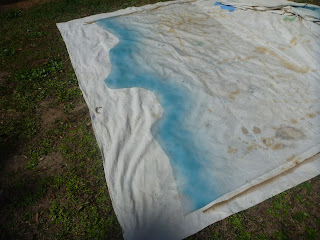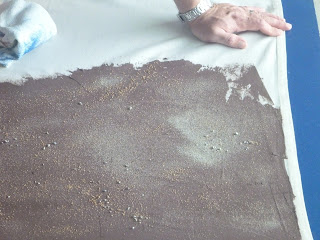Finally I've decided to put a post on my blog. Hard to believe but I actually created this blog in Sept 2011 and its only taken me close to two years to actually post something. Not bad I say!!
So a little bit about me might be good start.
My name is Daniel and I currently reside on the northern fringe of the Gold Coast in what is supposed to be sunny Queensland, Australia. You wouldn't think it was with the level of rain we've had over the last few years but at least all the dams a near capacity and noones talking about water restrictions. I'm married to a great woman who not only tolerates my hobby for the most part but also encourages it, and I have 5 children ranging from 3 years through to 15. My 15 yo is more interested in computer games than gaming but he will have the odd game with me. His preference is Warhammer 40K but what do you do???
I started collecting 1/72 scale figures back in the early 80s. I met an Scottish boy in primary school who had some Airfix Ancient Britons, Romans and ACW figures that I fascinated over every time I'd go over to his house. I sooo had to have them and eventually I bought them off him. They were missing bits here and there but I still have those figures. The first set I purchased at a store I think was the Airfix British Highlanders. They definitely were the first set I ever painted and while not the best, probably was fairly good for my age. My grandmother fueled my love of the hobby, purchasing numerous figure sets for me on Birthdays and Christmas and many times on not so special occasions as well. My brother's thing was matchbox cars. Mine, little plastic soldiers!
I collected Airfix and Esci figures into my late teens of any era, before other interests took over. I always had my original collection and did dabble in painting every now and then but it wasn't until after I met my wife back in the early 2000s I rekindled my interest in the hobby. The range had somewhat broadened over the years but my interest was mainly focused on ACW. I think a lot of John Wayne movies over the years got me hooked there. I had the intention not only on collecting plastics but also metals in the 1/72 - 20mm scale and then doing reviews and comparison shots for others interested in knowing how each brand compared with the others. It never eventuated, but I will probably still do it via this blog. I have managed to collect a lot of rare 20mm ACW figures over that time, some well out of production. I have well over 3000 ACW figures both metal and plastic. At the time I hadn't really made up my mind whether I was just going to do dioramas or try my hand at wargaming. I didn't know anyone who had the same interest in my area. Below is a picture I've mine that I've posted on TMP. For those interested I post under the tag Neilad (an anagram of Daniel)
 |
| Comparison of Thomas 20mm and Strelets 1/72 Abraham Lincoln |
This focus on ACW led me to a gamer in Brisbane in 2010 by the name of Donald (Ochoin for those on the Hat or TMP forums), who was actually looking at what was available for ACW in this scale. We arranged to meet up and now, thanks to him, I am a strong wargaming advocate and have started collecting armies in many different eras......the main focus there being "collecting". Still working on the painting but will get there eventually. We game as often as we can ....generally once every couple of months but once a year we put on a two day event at a Model Railway Show in Brisbane. I'm generally the terrain guy which coincidentally I noticed matches my namesake on
Larry Leadhead.
Below is the first unit I completed. An Allied Republican Roman force for Field of Glory ruleset, but more on that in a later post.
 |
| Allied Republican Romans |
The Era's that I'm actively collecting armies for and intended rules are
Biblical - Assyrians - Field of Glory
Punic/Macedonian Wars - Roman/Gaul/Macedonian - Field of Glory
SYW - Hanoverian/British - Undecided (tried Pro Gloria but still looking)
Napoleonic Wars (only really a filler for the other guys armies) French - ELAN
ACW - Fire & Fury
Sudan - TSATF?? maybe something else
Zulu Wars - Undecided
WWII (North Africa) - German/Italian - Blitzkrieg Commander
Why 1/72? I think it is a great size for showing a lot of detail but small enough to field good size armies, and being mainly plastic figures, are cheap and relatively easy to convert.... and I love to convert. I've looked at smaller scales but the price point is still good at this scale.
The initial part of the this blog will be to go back through all my photos and post pictures of figures I've painted or terrain that I've put together over the last few years and hopefully add to this as I continue in this great hobby. I hope you will all enjoy.




























